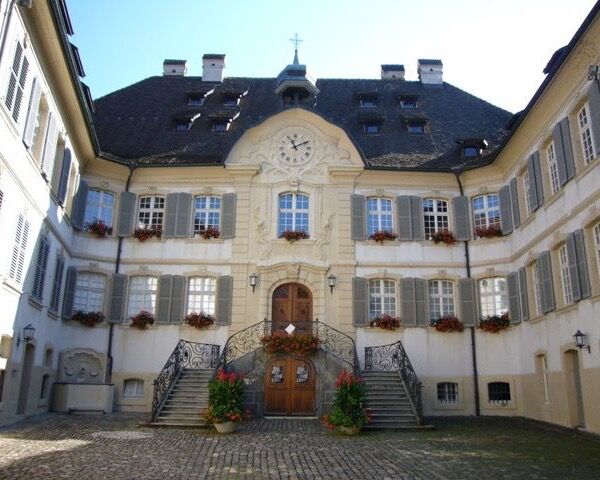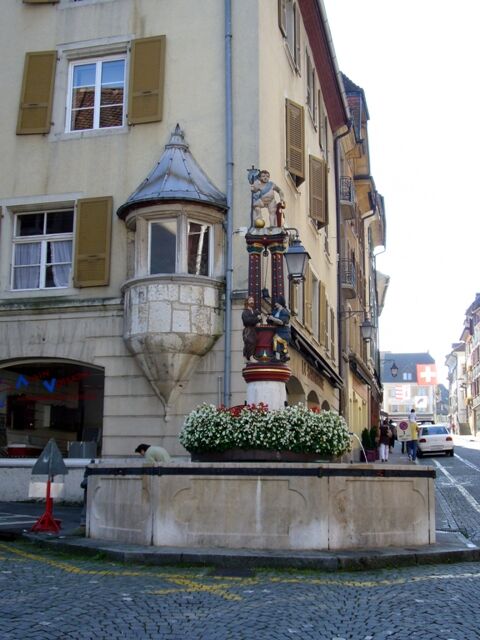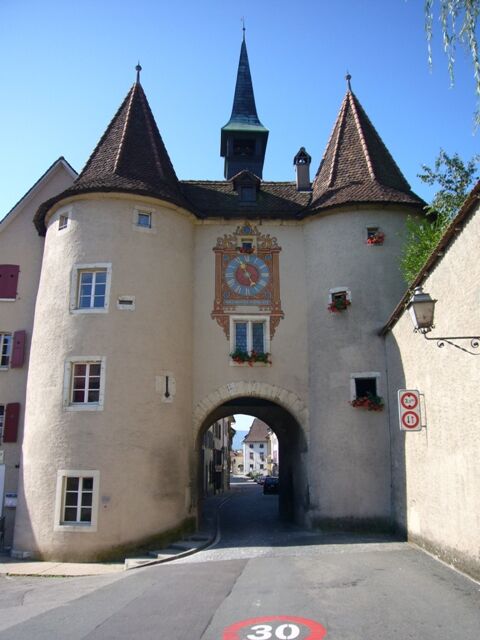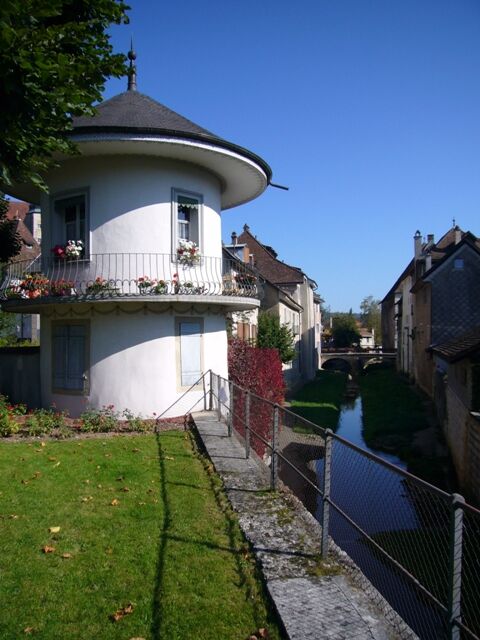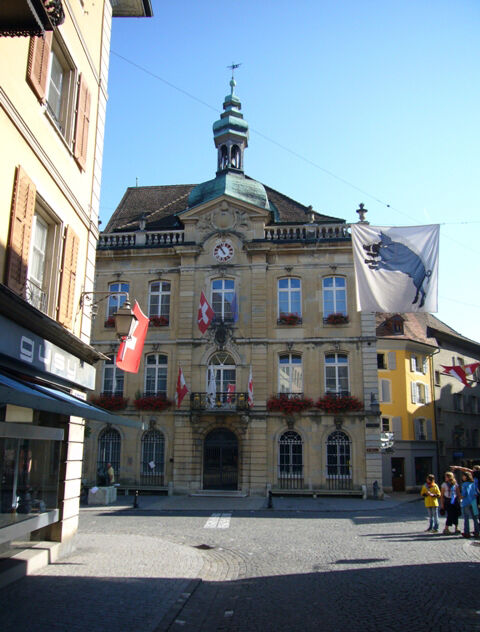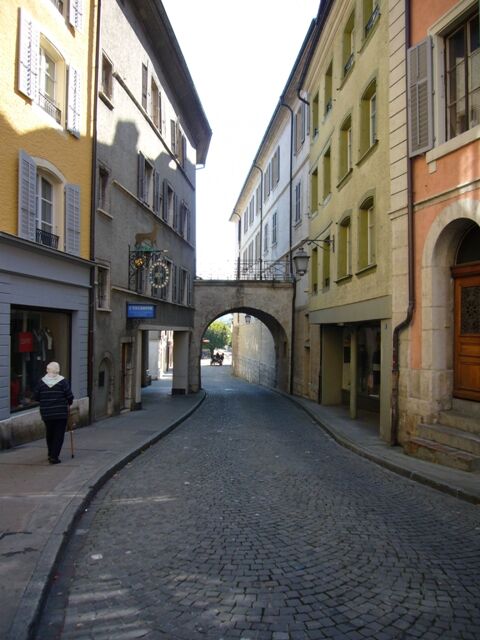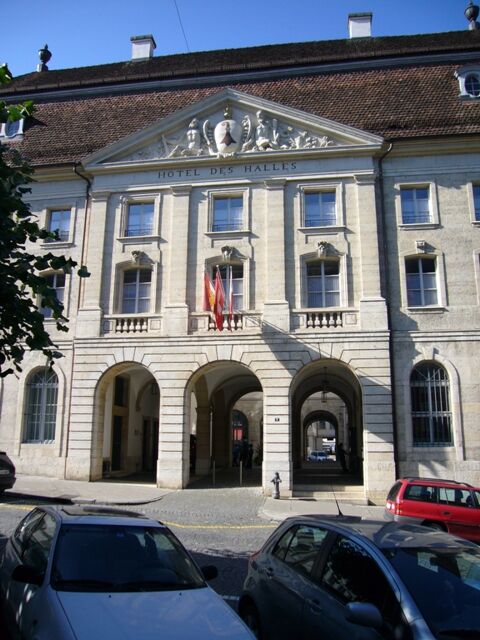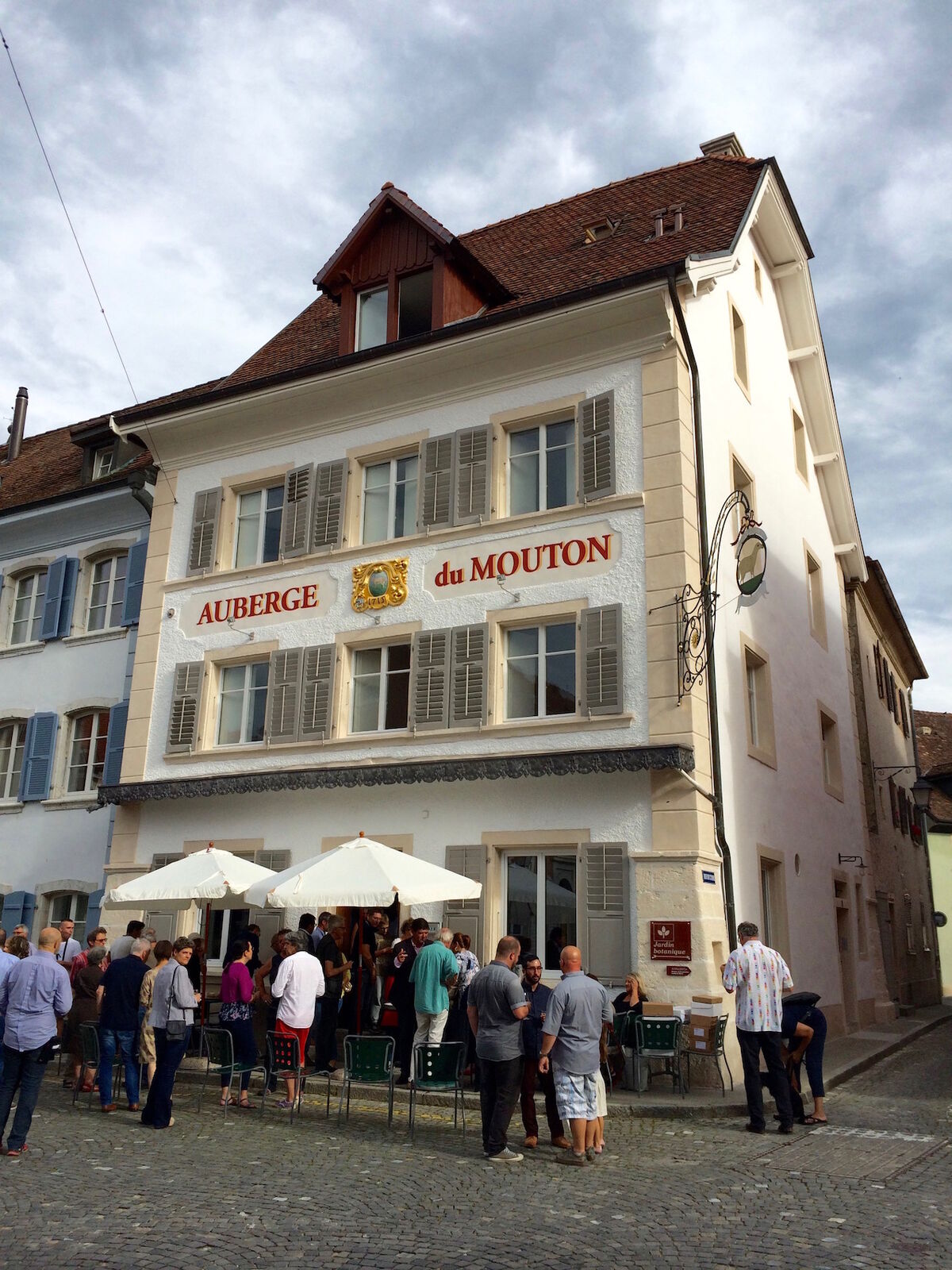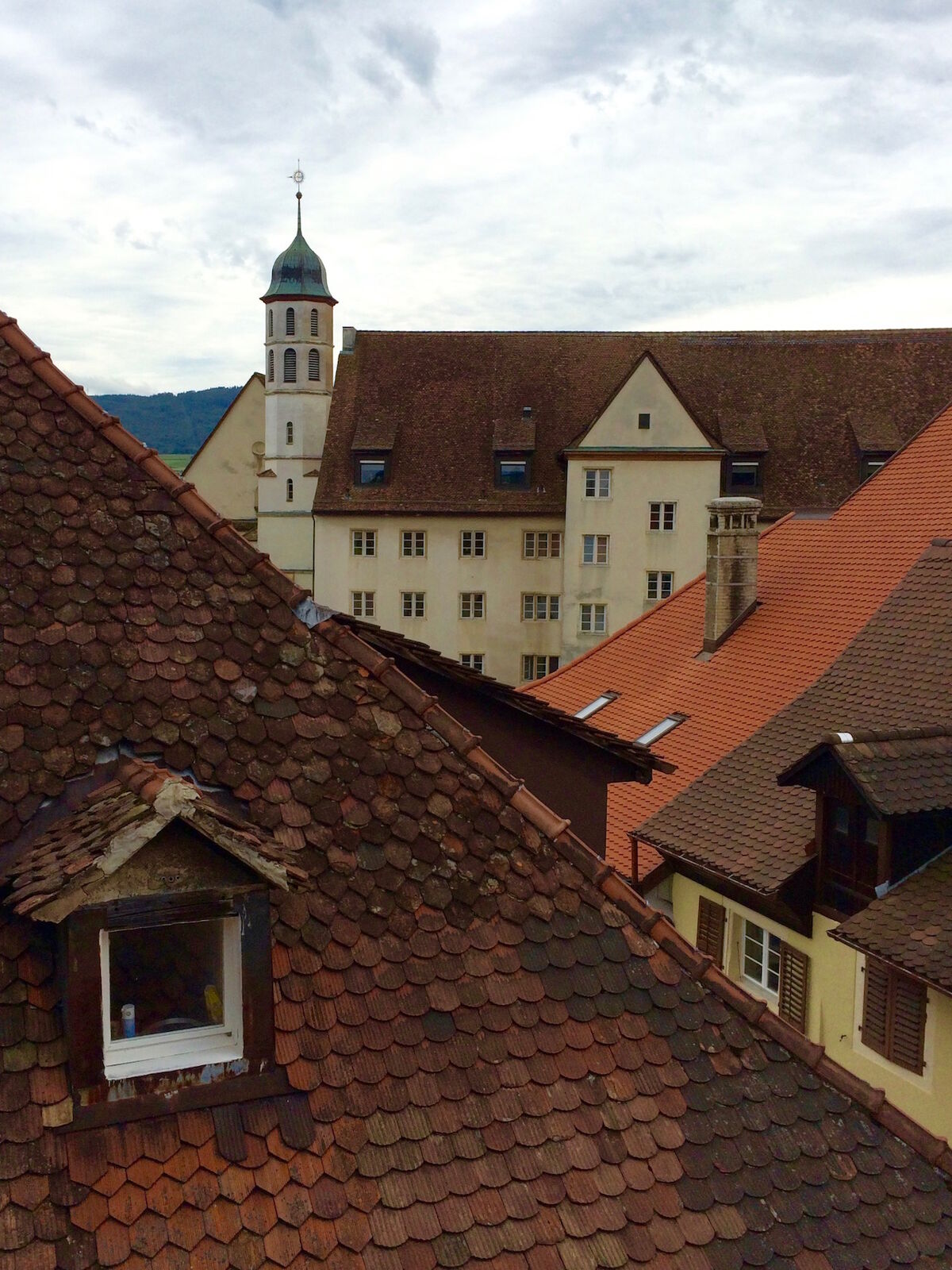The Porrentruy’s area in the canton of Jura includes the Ajoie and the Clos du Doubs with the medieval town of St. Ursanne.
The Ajoie is overflowing with the truly natural Switzerland and its borders describes a lozenge between the Alsace (France) and the Franche‑Comté (France).
In the past, Porrentruy was the headquarters of the Prince-Bishopric of Basel. Today it plays the role of cantonal intellectual center with its various schools.
The region extends over 300km2, it is a lowland with a verdant landscape, which is commonly named “the Ajoie’s orchard”.
It is also a region devoted to watchmaking and to mechanics. Indeed, since the 19th century, various factories started to install in the region. Hence, a unique know-how is developed in these industries.
In addition, the Porrentruy’s area offers a beautiful cave and a prehistoric park in Reclère, a large aerodrome in Bressaucourt, caravan tours, hikes, horse trekking or cycling tours, beautiful ponds and a wonderful botanical garden with an extraordinary collection of cacti.
Porrentruy with its 7,000 inhabitants at 423 meters above the see, is ideally situated at one hour of Basel, Biel or La Chaux-de-Fonds. One also needs one hour to go in Mulhouse or three hours to Paris with the TGV (including the journey to the SNCF train station).
The first trace of human presence in Porrentruy is a mesolithic tool that was found in the back yard of the Hôtel-Dieu. Scattered, individual objects have also been found from the neolithic, the late Bronze Age and the Iron Age. The first known settlement in what became Porrentruy goes back to the Roman era. In 1983, the ruins of a Gallo-Roman temple were discovered in the cemetery on the north of town, and Roman coins were found there. Near the town, a kilometer long (0.6 mile) section of the Augst-Epomanduodurum (now Mandeure) Roman road was discovered.
In the back yard of the Hôtel-Dieu the charred remains of a building from the 10th or 11th century were discovered. However, the first historical mention of the name occurs in 1136 as Purrentru. The name presumably comes from the Latin pons Ragentrudis (Ragentrud bridge). Ragentrud was the wife of the Frankish King Dagobert I. The German form of the name, Pruntrut may have a separate etymology from Bruntrutum, which means an abundant spring.
The first settlement was established in 1140 in the vicinity of Church of Saint-Germain, which was built in the Early Middle Ages. The Counts of Pfirt, who owned the region around Porrentruy, built a castle on a defensible hill and made it the capital of the Ajoie territory. A settlement (now known as the Faubourg de France) was founded at the foot of the castle, with another south on the opposite hill. The city wall was probably built before 1283 and surrounded the two settlements, but not the parish church of Saint-Germain.
In 1236 the Counts of Pfirt pledged the town to the Counts of Montbéliard, however, they retained their rights to the Ajoie until 1281 when they sold the territory to the Bishop of Basel. The Counts of Montbéliard refused to hand over Porrentruy, which led Bishop Henry of Isny to request support from King Rudolph I of Habsburg. After six weeks under siege, the Count relented and handed it over to the Bishop. On 20 April 1283, the king asked the Bishop of Basel to grant Porrentruy a town charter and make it a free Imperial city. While the Counts of Montbéliard retained some power in the town, their influence waned during the 13th century.
Financial difficulties forced the Bishop to sell the Ajoie (including Porrentruy) back to the lords of Montbéliard in 1386. But in 1461, the town once again became subject to the episcopal see. Because of the Reformation in Basel, the Bishopric moved its official headquarters to Porrentruy in 1527.
Under Bishop Jakob Christoph Blarer von Wartensee, who reigned from 1575 to 1608, the town reached the apogee of its importance. In his time, many architectural projects, including expansion of the castle and the building of a Jesuit college, were undertaken. This period of prosperity ended in 1618 with the outbreak of the Thirty Years' War. Porrentruy was repeatedly occupied, besieged, and plundered.
The first parish church of Saint-Germain was replaced in the 13th century by a new building, which underwent several renovations. The Church of Saint-Pierre was completed in 1349 and became the parish church in 1475. The cathedral chapter was established in 1377. Several religious orders were active in the city, including the Jesuitswho built their college in 1591. In addition to the Jesuits other orders included the Ursulines (1619), the Sisters of the Annonciade (permanently established in 1646) and the Capuchins(1663).
The first uprising against the Bishop's power was under the Comité de la Commune de Porrentruy on 20 August 1790, but they were unable to expel the Bishop. However, on 27 April 1792, French Revolutionary troops invaded the city and drove the Bishop out. Porrentruy became the capital of a dependent republic, which was then incorporated into France in 1793 as the Département du Mont-Terrible. In 1800, this department was incorporated into the Département du Haut-Rhin as a sub-département. During the War of the Sixth Coalition against Napoleon, Allied troops entered Porrentruy on 24 December 1813. Following their liberation, the future of this former episcopal seat was uncertain. The government divided into two parties, the Episcopal party that sought the return of the prince bishop as the head of a Swiss canton, while the French party wanted to retain the current secular government. However, soon after the fall of Napoleon, the municipality was given to the Canton of Bern (in 1815) to compensate for the loss of the Canton of Vaud, which had become a separate canton in 1803.
Both factions, the religious and the secular, retained power in the town in the following years. The political life in the 19th century was characterized by the severe conflict between Liberal-Radicals and the Catholic Conservatives. The secular side gained power in 1860, when the mayor, Joseph Trouillat, was forced out of office. The Radicals retained the mayor's office and a majority of the town council from 1860 until 1972.
Until World War I, Porrentruy was the cultural center of the region and had a larger population than Delémont. However, with the increase in automobile traffic, its situation on the edge of the country became a liability and caused economic stagnation. In the second half of the 20th century, tensions between the French-speaking minority in the Canton of Bern and the German-speaking majority led to the creation of the new Canton of Jura on 1 January 1979. To the chagrin of the inhabitants of Ajoie, Delémont was chosen as the cantonal capital.
.
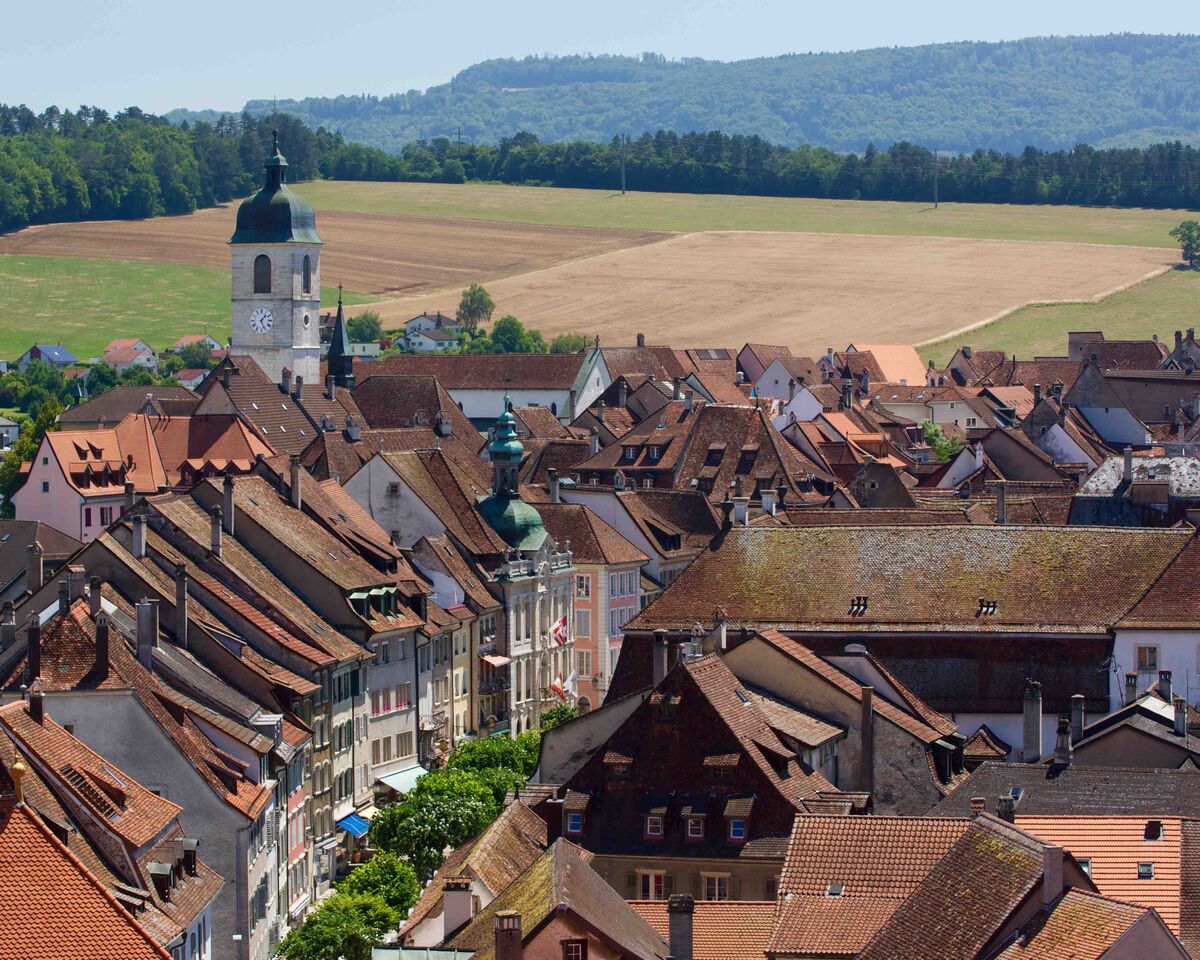
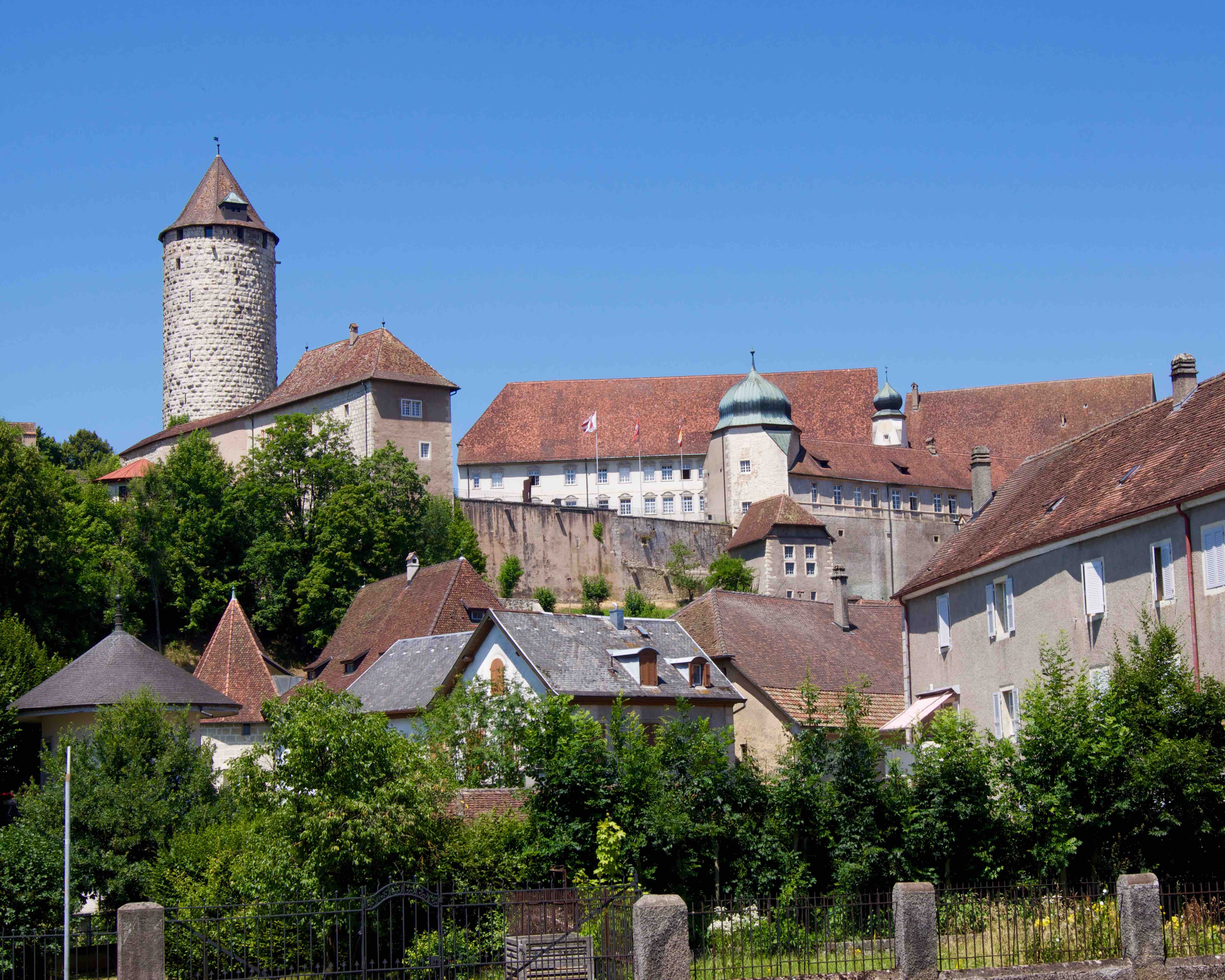
Porrentruy's castle
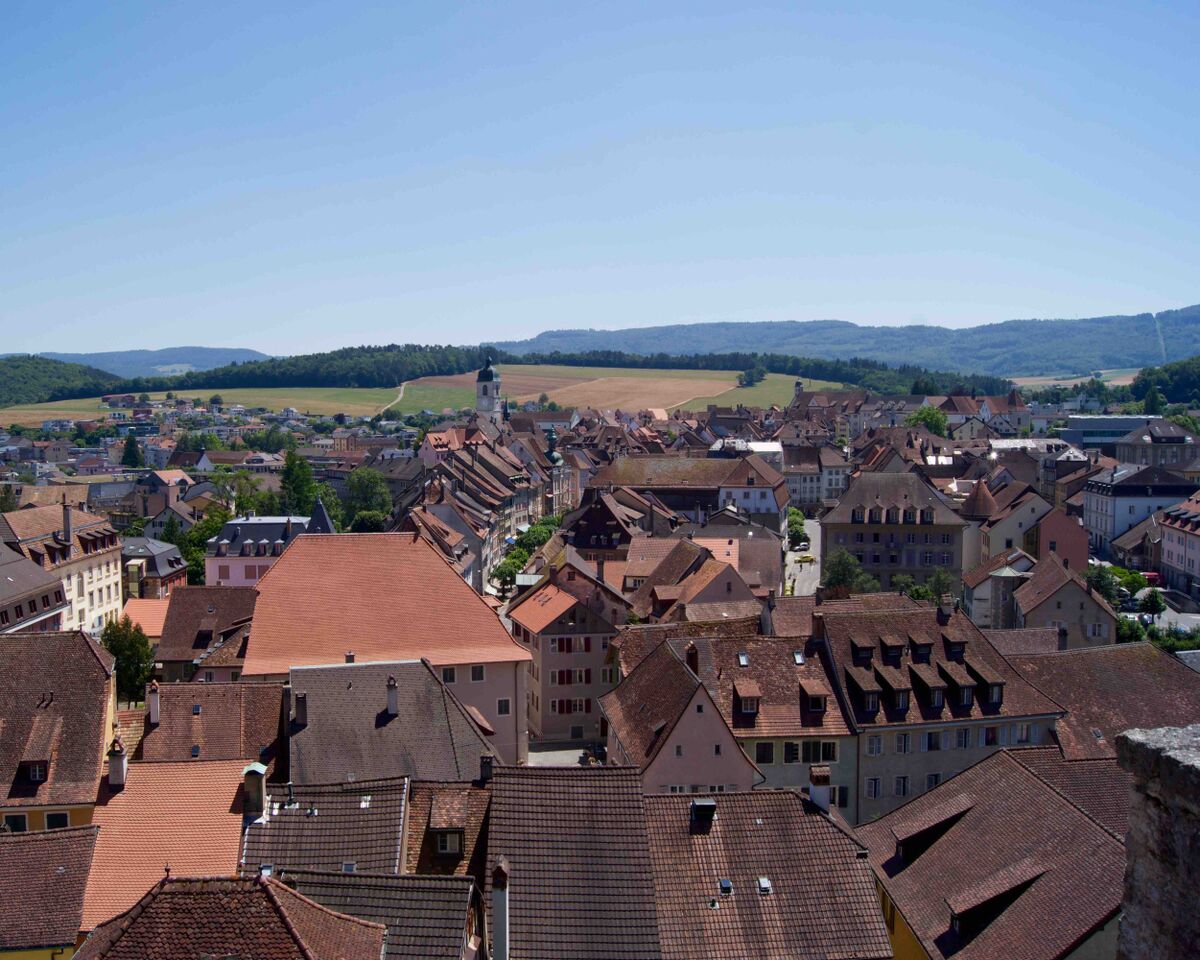
View from the castle’s courtyard
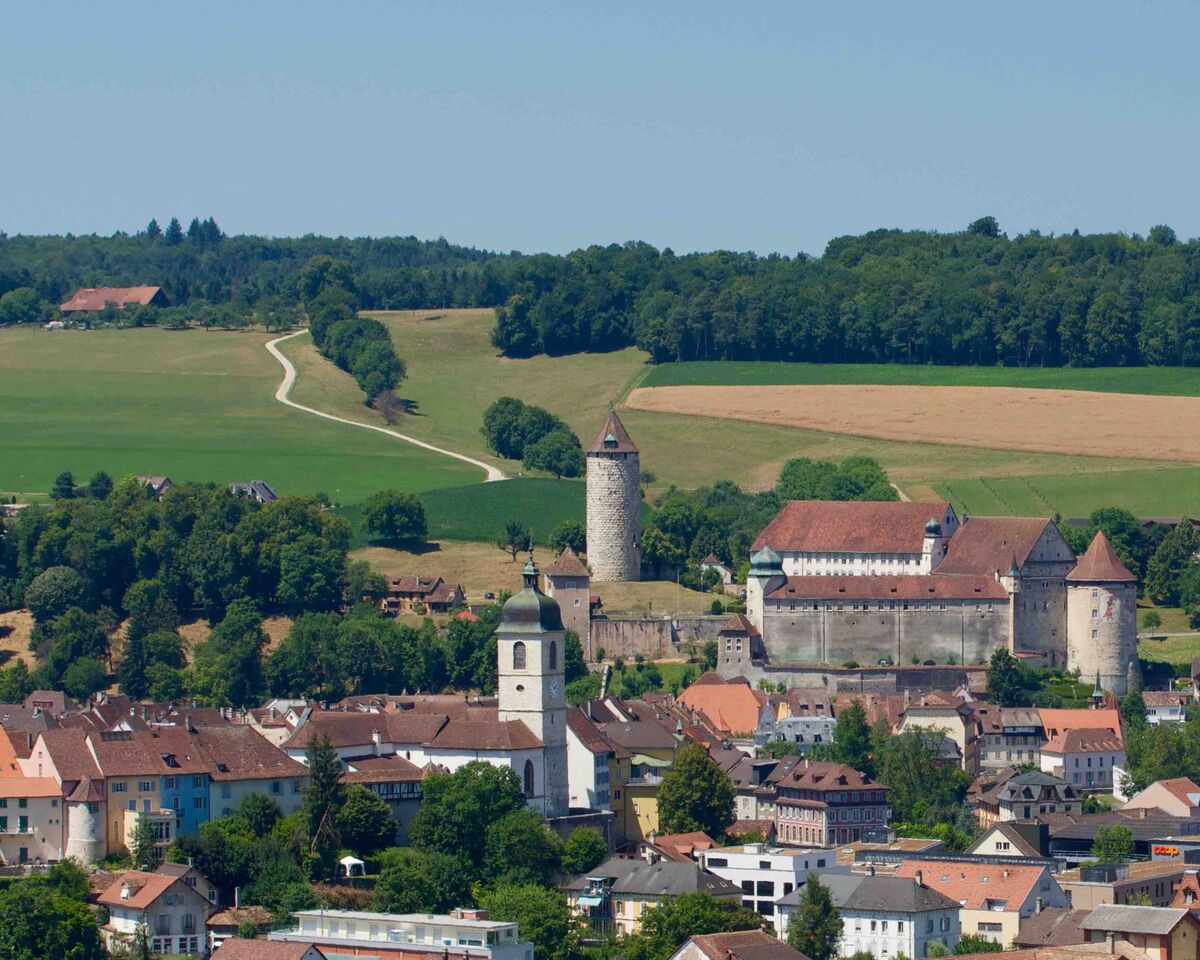
View from the forest named “La Perche”
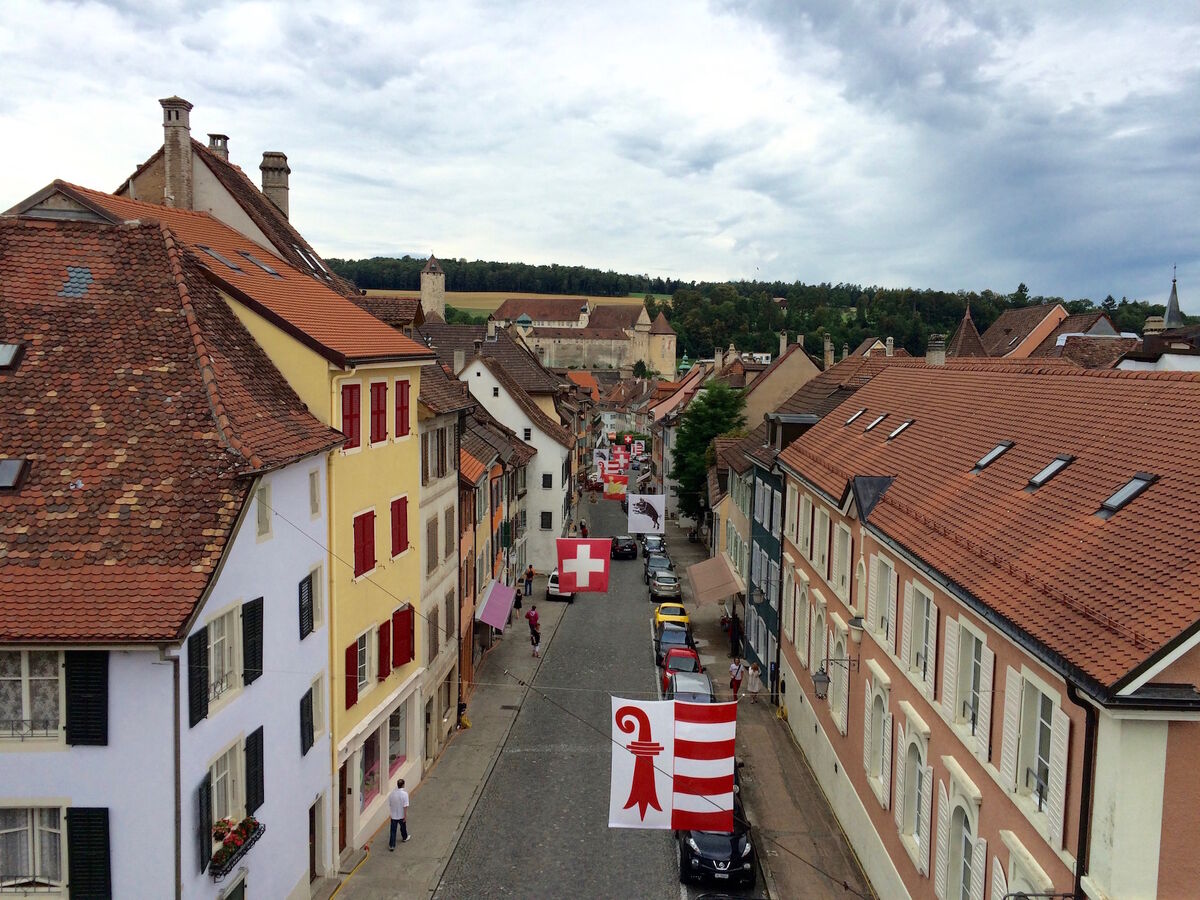
View from the top of the Grand Rue
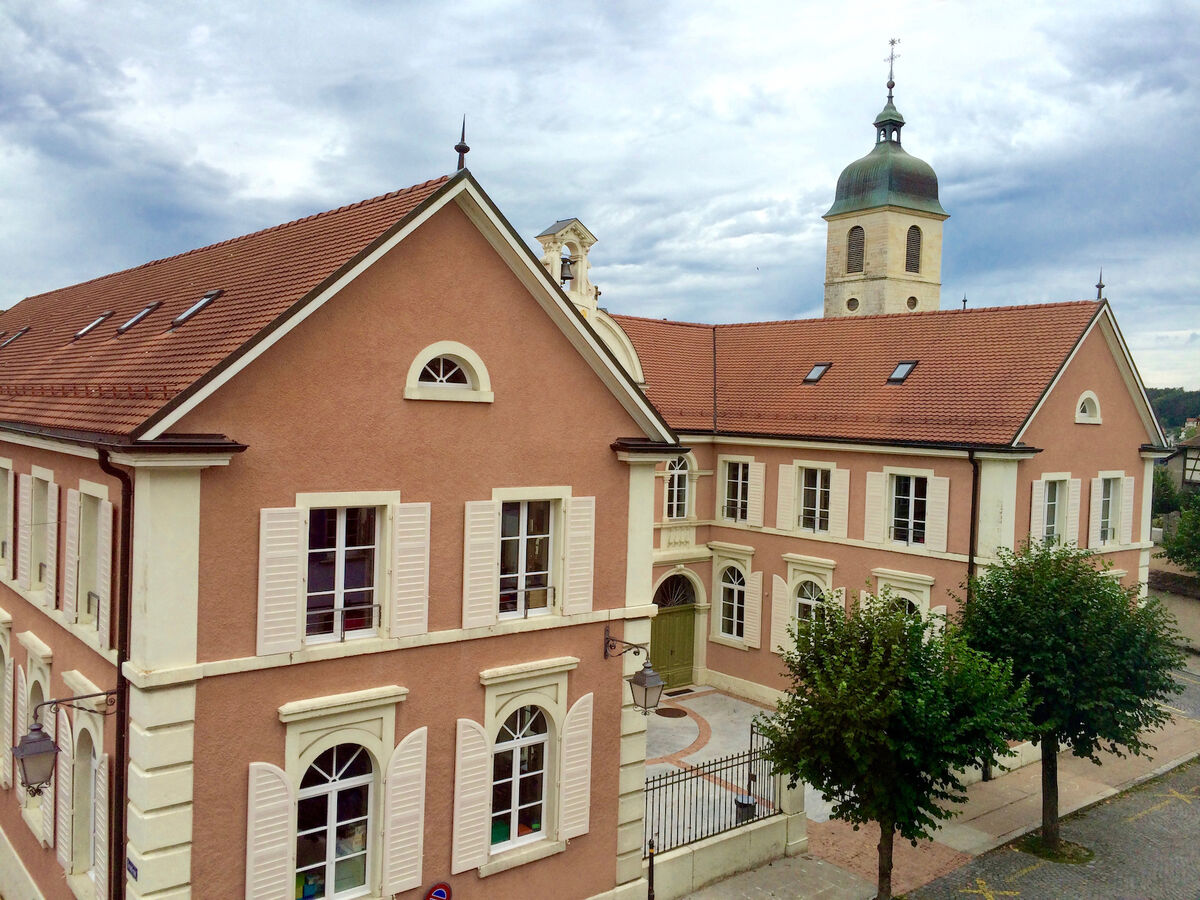
Pro Juventuti School with the St. Pierre Church in the background
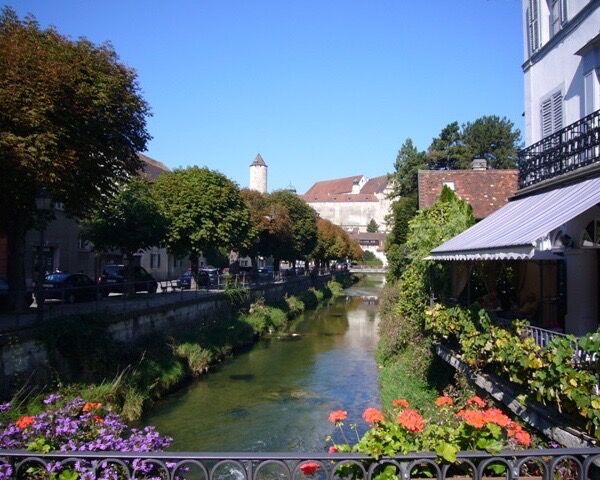
Allaine river and the terrace of the Auberge d’Ajoie
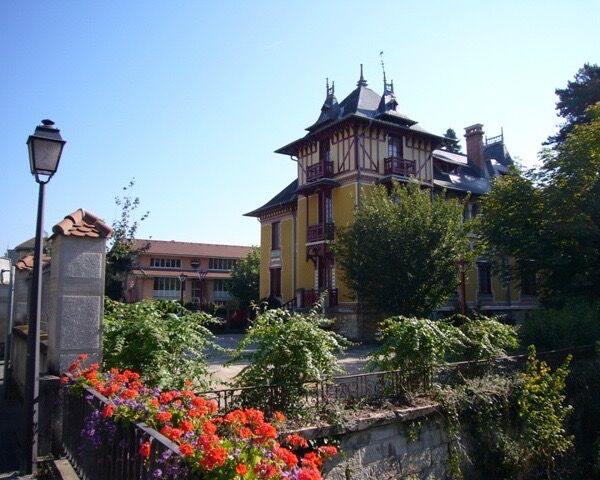
The Villa Pfister
